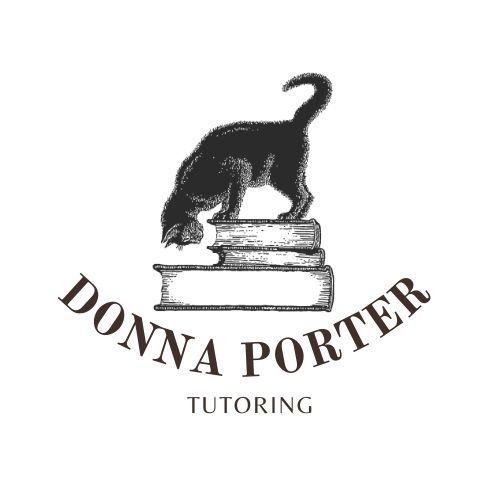Those Big, Beautiful, Bouncy Hot-Air Balloons: A Literature & Writing Unit for All Ages to Welcome Spring
- dhportertutor
- Mar 2
- 4 min read
Spring is finally here, and nothing says happy and welcomes the season like hot-air balloons. Big, beautiful, and bouncy - they come in all shapes and sizes as they incite the imaginations of all ages while floating across the skies!

It's easy to bring all that energy into whatever classroom you teach - from public to private to homeschool. And never discount the power of projects at home with your littles, especially over spring break or on long weekends.
What follows is a lesson plan designed for the second grade classroom, but it can easily be adapted for various grade levels. Younger students will need more of your help. Older students can read the books on their own, create their own graphic organizers for the books, and write longer stories.
Adapt as you wish, and don't be afraid to recycle this lesson every few years with other books or in greater depth.
Step #1: Study how hot-air balloons work
This is a great science activity/study for working and/or extending steps-in-a-process. Books can be read and/or videos can be watched online. Simple steps can be discussed with younger students. More complex processes can be studied with older students.
You can further extend the activity by having the students write a process, or how-to paragraph. Writing the steps and/or a paragraph or essay can be done as a group or individually, depending on the grade and/or skill level of your students.
Step #2: Read fiction books about hot-air ballons
Two of my favorite books are The Great Town & County Bicycle Balloon Chase by Barbara Douglas and illustrated by Carol Newsom, and Hot-Air Henry by Mary Calhoun and illustred by Erik Ingraham. The first is about a race, a balloon, and the search for a parrot. The second is a charming book about a cat that takes a hot-air balloon ride on his own. Both show the steps and skill in piloting a hot-air balloon.
Consider having older students read Around the World in 80 Days by Jules Vernes, or use it as a read aloud for younger students. Don't be afraid to find an abridged classic of the book for upper-elementary and/or middle school students.
For a list of other books about hot-air balloons, check out this list on Goodreads.
Step #3: Literary elements / plotting the stories
Plot 2 or 3 of the stories/books on your favorite plotting chart. Even if we do a class chart, I require the students to fill out one for themselves, too! And don't discount the power of a children's book for older students. They are great for understanding, reviewing, and/or analzying the basics of story-telling.
This step may take a little time, but that is alright! Understanding the basic of story-telling is important and takes times.
“Nothing but blue skies and hot air balloons.” Marisa Casciano
Step #4: Compare and contrast the books
Spread out the plotting charts and discuss how the stories are alike and different. Focus on characters, inciting incidents, rising action, settings, and more. Venn diagrams and graphic organizers are a great way to save the information for later access.
Step #5 - Write a hot-air balloon story
Students can either rewrite one of the stories they read, or they can write one of their own.
They should fill out a plotting chart before writing. Focus on what they will change in their story - the characters, setting, problem, etc. The depth of the plotting will depend upon the grade and skill level of the student.
For really young students, a main idea sentence and a few sentences with an ending might be all they can manage. For older students, requiring they incorporate the steps for flying a hot-air balloon is a great way to incorporate science learning.
Fly those balloons into publishing . . .
This activity lends itself nicely to extending. For younger students, it is a great favorite to design hot-air balloons. Check the internet for all kinds of great ideas!
For a simple but creative way to make hot-air balloons, I simply had the students draw and cut out two sides of the balloon (from paper). When finished designing, staple the edges while leaving an opening to stuff crumpled paper inside for a puffed look. Don't forget to staple closed when done. With yarn, attach half a plastic basket (old strawberry baskets work well if they can be found) to the balloon with yarn. Post the balloons on a wall or bulletin board and have the stories nearby to share and enjoy!
This is certainly not the only way to incorporate art with publishing. Feel free to paint the balloon, make them out of paper-mache, or do something even more elaborate if you wish!
The sky and your imagination is your only limit!
__________________________________________________________

Donna Hechler Porter, a graduate of Texas A & M University, is a life-long educator, a published author, and an arm-chair historian. When not writing or teaching, she rescues old furniture from the side of the road, stops at all garage sales, and never meets a thrift store she doesn't fall in love with! Donna has created Donna Hechler Porter, Tutor, to expand her love of reading and writing to help more students, young and old alike, fall into the magic of words and pens and to launch themselves into the futures they were destined for! Contact Donna at dhportertutor@gmail.com
_________________________________________________
Are you a parent and/or a teacher? Want more ideas for engaging children in your world, improving their grades at school, and/or encouraging them to think and problem-solve? Then sign up for Donna's newsletter here. A free gift will be waiting for you at the other end of the signup!





Comments